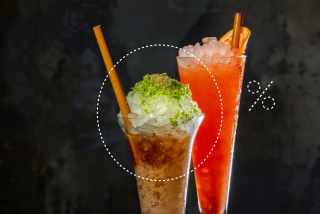What’s new at Gaja, the 156-year-old Italian winery
Gaia Gaja doesn’t get to L.A. much, so when the daughter of one of Italy’s most prominent winemakers came to town, we met to catch up on what was happening in Barbaresco.
Her father is Angelo Gaja, who put Barbaresco, Piedmont and Italy on the world wine stage back in the ’70s and ‘80s. The distinctive black-and-white label is among the most recognizable in the world and Gaja Barbaresco and Barolo has a strong presence on top wine lists. In addition to Gaja winery in Piedmont, the family also owns the estates Pieve Santa Restituta in Montalcino and Ca’ Marcanda in Bolgheri, both in Tuscany.
After 44 years with Gaja winery, winemaker Guido Rivella retired last year. Alessandro Albarello, Rivella’s right-hand man for the past 17 years, has moved into the winemaker position, although he still acts as an advisor.
For the first time in its 156-year history, the Gaja family has brought in consultants from outside — not in the cellar but in the vineyards.
Concerned about the changes wrought by global warming, Gaia says she and her father are working with a French botanist who has urged them to stress the vines less.
The main lesson, she says, is that instead of stressing the vines by correcting the plant, they — Gaia, her father, and the consultant botanist — are learning to suggest what the plant should do by nourishing the soil. For example, young vines tend to be very vigorous and explode with leaves. So they have to cut back the canopy of leaves and perform a green harvest (cut away some of the still unripe grape bunches). By planting grains and cereals between the vine rows, they can also slow the plant’s growth so it won’t develop such a huge canopy.
Another example: the single-vineyard Sori Tildin, which makes one of the winery’s most celebrated reds, has very dry, compact soil. There, they’ve introduced a special grass between the densely planted rows which doesn’t take much water, yet has deep roots that break up that compact soil.
The winery doesn’t work with just one consultant, says Gaia, using an old Piedmontese expression, because “no one has the truth in his pocket.”
The winery is also working with the University of Bologna to identify and understand new diseases that are affecting the vineyards due to global warming. To encourage beneficial insects, especially bees, in the vineyard, the family has called in a consulting entomologist. On his initiative, they’ve gone high into the hills where there are still meadows to collect seeds for native grasses and wildflowers. Now in the spring, you’ll see wildflowers blooming between the rows of vines covering the steeply canted hillsides.
And on top of all that, this region’s lovely landscape of vineyards, including both Barbaresco and Barolo, was officially added to UNESCO’s World Heritage sites last year.
Follow @sirenevirbila for more on food and wine.
More to Read
Eat your way across L.A.
Get our weekly Tasting Notes newsletter for reviews, news and more.
You may occasionally receive promotional content from the Los Angeles Times.






